Share this article
Wild Cam: Carnivores caught candid roaming the suburbs
Suburban life can be great for carnivores. There’s plenty of green space, and it can be fairly peaceful — as long as they get along with their neighbors.
New research using about 43,000 thousand camera trap photos of carnivores in suburban areas of Raleigh, North Carolina and Washington, D.C., show that bobcats (Lynx rufus), red foxes (Vulpes vulpes), coyotes (Canis latrans) and gray foxes (Urocyon cinereoargenteus) all make suburban homes, though they don’t all seem to prefer each other’s company.
“We know that potential is there for them to adapt in suburban areas,” said Arielle Parsons, a researcher at the North Carolina Museum of Natural Sciences and the lead author of a study published recently in the Journal of Applied Ecology.
To take a closer look at how all these species interact and live right under humans’ noses in the suburbs, we’ve selected a few camera trap photos, all courtesy of eMammal.org, taken with the help of 557 volunteers and 1,260 remote camera traps, for our latest Wild Cam entry.
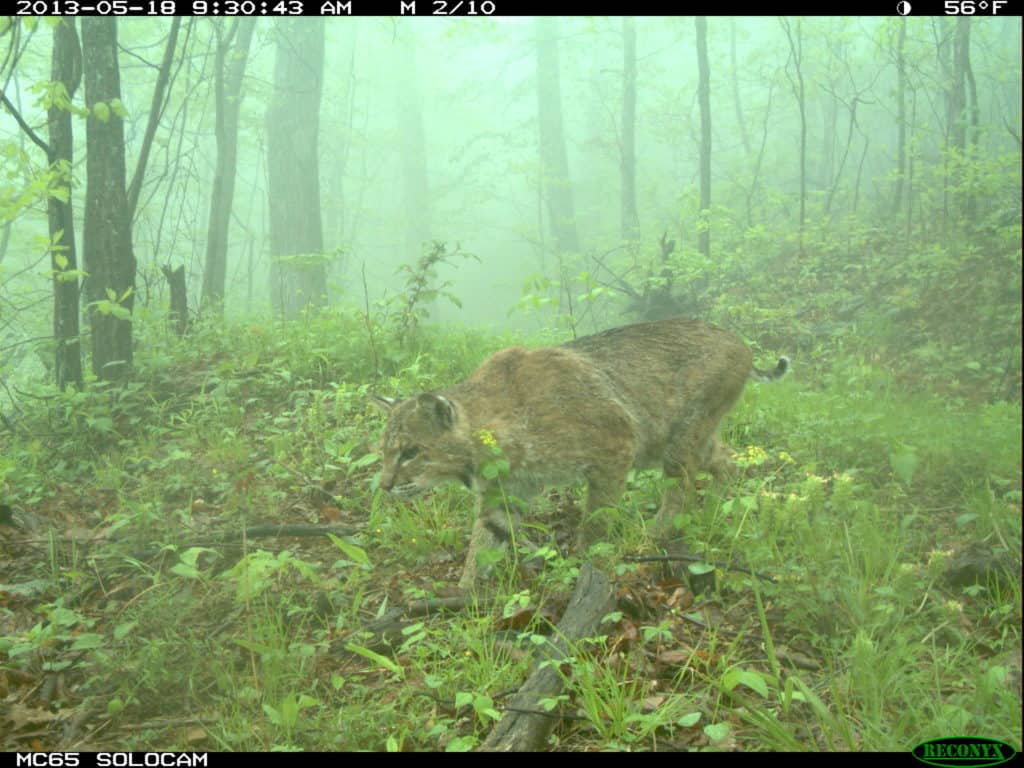
©eMammal.org
In their study, researchers first split the city areas into gradients which represented the density of human habitation. They found that all four species of carnivores used all gradients, though some didn’t appear in some as often as in others.
While they were the least common of the four carnivores analyzed in this paper, one of the more surprising findings was how often bobcats made appearances in suburban areas, like this one pictured in Raleigh. Previous research had documented bobcats living in Raleigh and D.C., but never to this extent.
The felines were picky, though.
“Bobcats avoided yards completely. If they were in suburban areas, they were in forest fragments,” said Parsons, a PhD candidate at North Carolina State University.
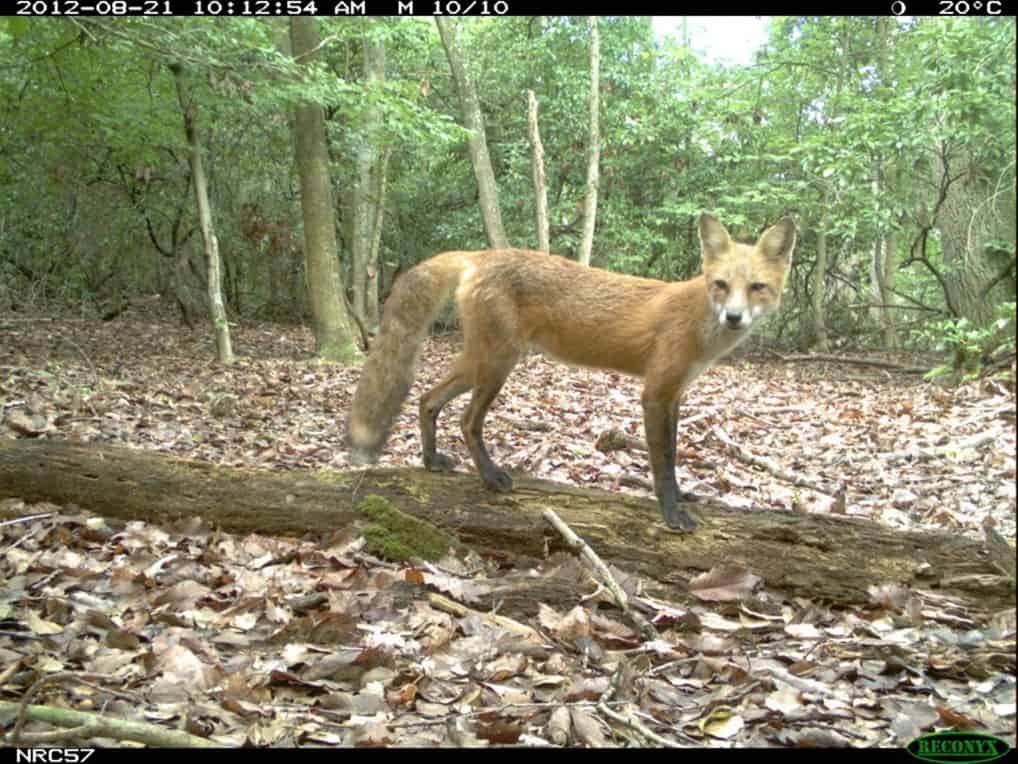
©eMammal.org
Red foxes tended to be scarce in the same areas where bobcats were found, the photos showed. Parsons said this may be due to competition between the two species. This red fox was pictured in the D.C. area, but the researchers found that the foxes and bobcats avoided each other in yards or forest fragments nearly across the board.
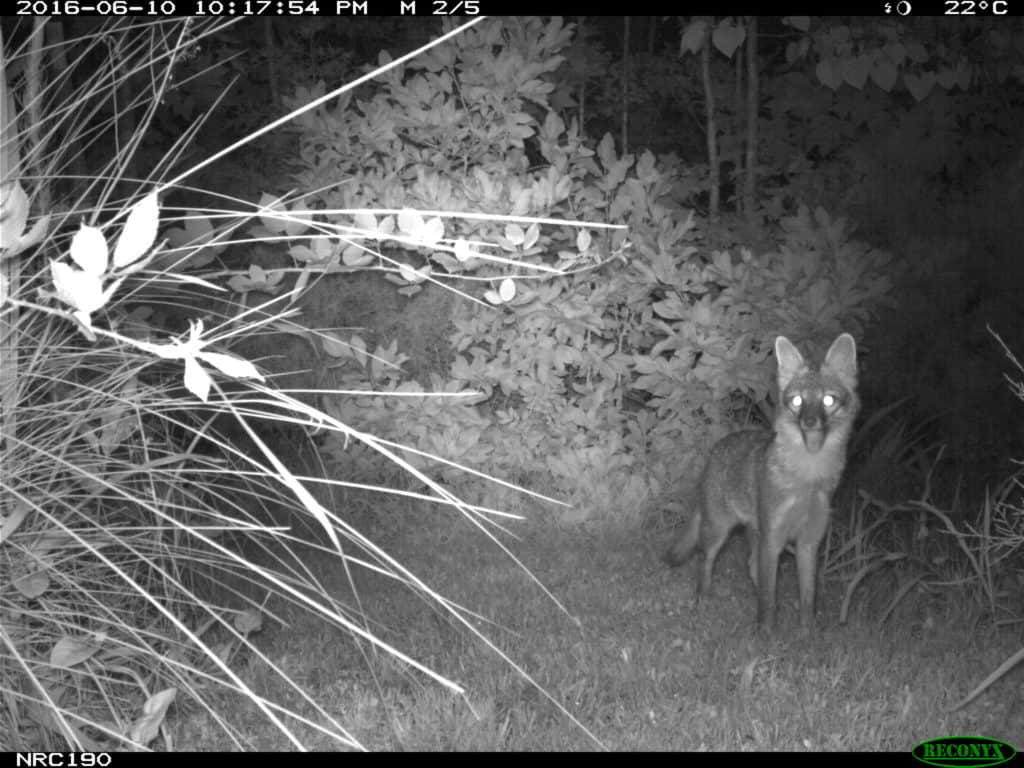
©eMammal.org
Smaller gray foxes like this one on the left in Raleigh weren’t so picky with other carnivores. In fact, they tended to pop up quite often in the same places as coyotes, according to the photos. This may be due to size — while coyotes are bigger than gray foxes, they aren’t large enough to scare them away. “This larger species is not outcompeting the fox,” Parsons said, adding that they aren’t likely using areas at the same time as other carnivores, though, like the coyote captured on the right.
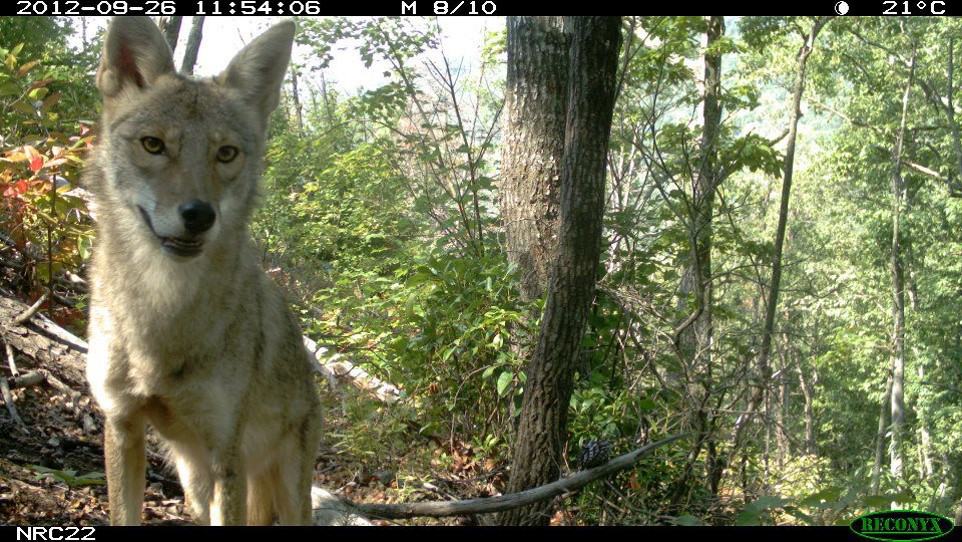
©eMammal.org
Coyotes’ relatively recent takeover of urban areas was one of the inspirations to conduct this research. The photos, such as this one taken at the same site as the previous image of the gray fox in Raleigh, showed they are appearing to thrive in urban areas. “We don’t see them very often — that’s indicative of how shy they still are around the humans,” Parsons said, but they appeared in almost every human density gradient.
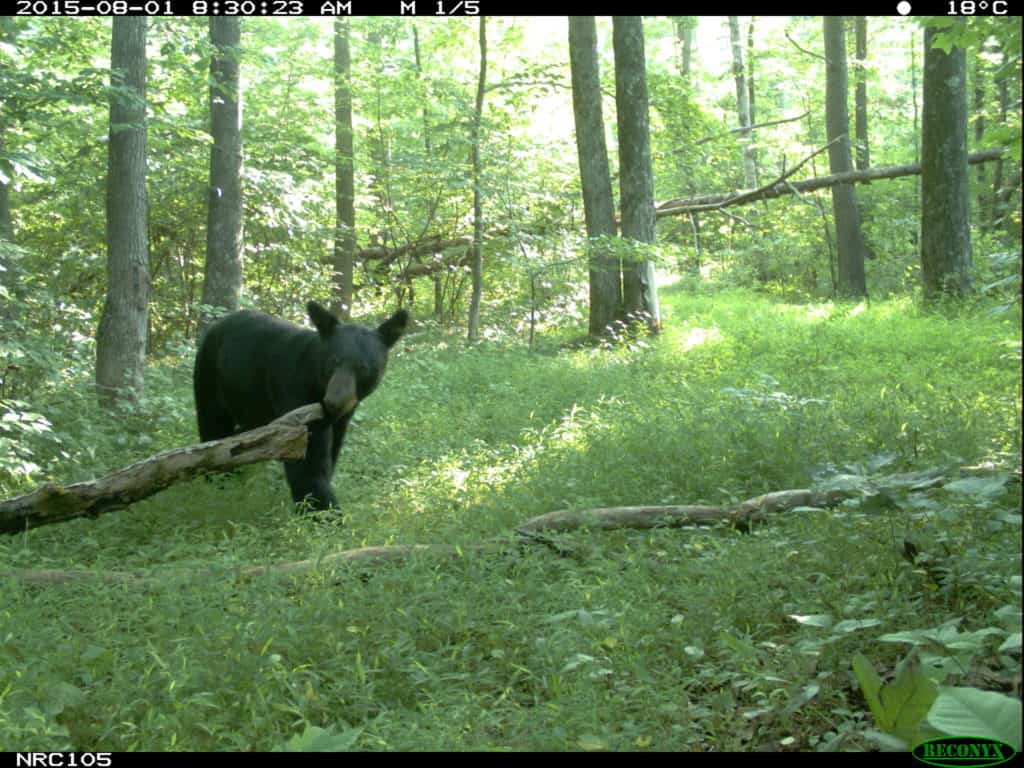
©eMammal.org ‘
A few other carnivores were present in suburbs — especially raccoons (Procyon lotor) and Virginia opossums (Didelphis virginiana). Novelty appearances included striped skunks (Mephitis mephitis) and even a black bear (Ursus americanus), snapped in northern Virginia near Washington, D.C.
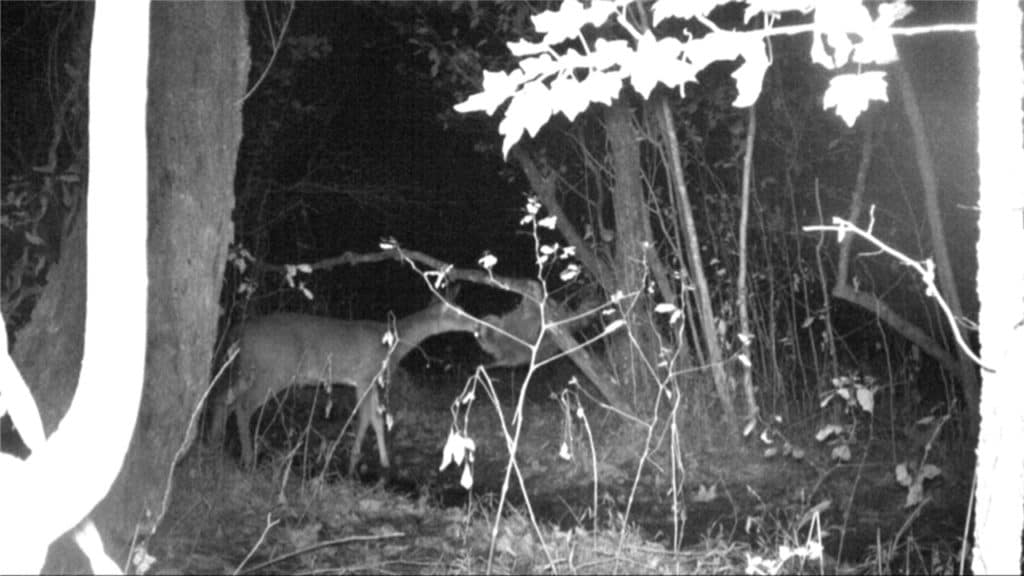
©eMammal.org
Another photo in Raleigh caught a candid, intimate moment between a raccoon and a white-tailed deer (Odocoileus virginianus) in which the raccoon appears to be licking or sniffing a deer’s mouth.
“That’s kind of a head scratcher — we don’t really know what that interaction represented,” Parsons said.
But most carnivores that were captured on camera appeared in forest fragments nestled among the suburban areas of Raleigh and D.C. “They are kind of all being funneled into these green spaces,” she said.
Parsons said this shows how important it is to conserve these areas as cities grow in size.
In the future, she would like to see if more research like this can be conducted to include other carnivores and more cities.
“We’re hoping we can do this in more cities,” Parsons said.
Wild Cam photo essays feature photos and video images of wildlife taken with camera traps or other equipment.If you’re working on an interesting camera trap research project or one that has a series of good photos you’d like to share, email Joshua at jlearn@wildlife.org.
Header Image: A gray fox appears in Raleigh, North Carolina. ©eMammal.org








